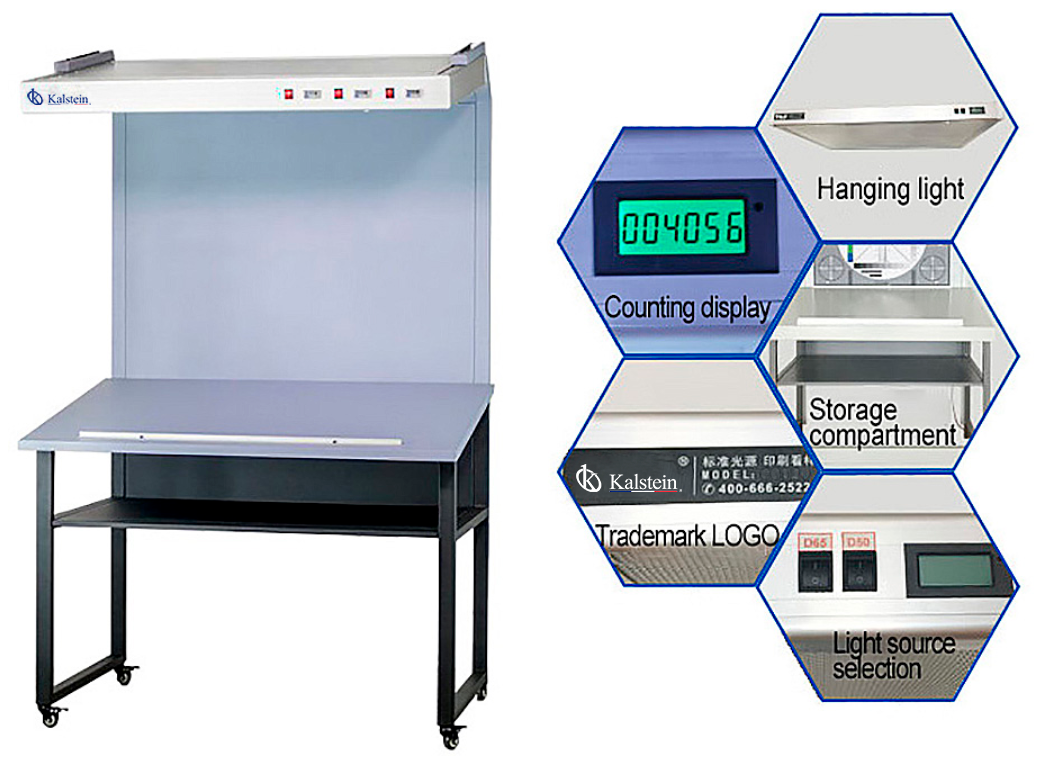Color determination using the Color Assessment box is a very useful tool for clinical analyzes in medical laboratories. It is an important process to detect the presence of pathogens in a sample and determine their clinical significance. Laboratory analyzes using the “Color Assessment box” are supported by the history of results obtained with this method.
In this sense, it is a technique of visual identification and evaluation of color through a box where there are six standard colored positions. These positions are defined by a set of specific markers, which are placed as a visual scheme to objectively compare changes in the color of a sample.
In light of the above, these standardized positions allow both microbiologists and laboratory technologists and clinicians superior accuracy when comparing the results of a clinical analysis. Many labs resort to purchasing these kits to maintain the quality of their results. In the market there are a variety of models for sale, supplied by equipment manufacturers at prices that are accessible to most laboratories.
What are the main features of the color evaluation box?
The main feature of color evaluation using the color evaluation box is that it can be used to compare one color or indication with another. This allows the distinction between different colors. For example, urine sampling can be compared to a range of different colors provided by the color assessment box. To this is added the advantage that an objective reading is obtained. In addition, using the box, you can record the reading of the result for further analysis.
Another feature of the color assessment box is that it can be used to detect different types of microorganisms in the same sample. Microbiologists and laboratory technologists can use the box to detect the presence of bacteria, viruses, fungi and other forms of microbial life in order to make an accurate diagnosis of a bacterial infection. This helps the doctor to decide on the right treatment.
What are the advantages of using the color evaluation box?
An important advantage of using the color assessment box instead of conventional clinical analysis methods is its relatively low cost. In addition, the use of the box is associated with high performance and accuracy of results, since the data obtained with this tool are reputed by medical and scientific professionals. This level of credibility in the results is a consequence of making the measurements in a controlled and systematic way, to a parameter that has subjective connotations, such as color.
Finally, many of the color evaluation boxes also allow the use of quality control to improve the reliability and validity of the results. Quality control reduces the risk of errors when establishing working protocols, which, if strictly adhered to, is a guarantee of having the processes under control. In this way, determining color has become a routine procedure in laboratories.
In conclusion, color evaluation by means of the color evaluation box offers an efficient and accurate method for clinical analyzes in medical laboratories. This tool is an optimal solution to detect microorganisms and obtain an accurate diagnosis. Its use is related to low cost and high performance and reliability of the results obtained. In this way, the color evaluation box has become the best method for clinical analyzes.
Systematization of color determination with Kalstein color evaluation boxes
Kalsteins color evaluation box is a powerful tool that serves as the basis for the implementation of protocols for determining the color of samples from clinical laboratories. These equipment have appropriate light sources and low energy consumption, and are built with materials that tolerate laboratory working conditions. In the company, we will be attentive to provide you with any information you need, through our websites HERE and HERE.

